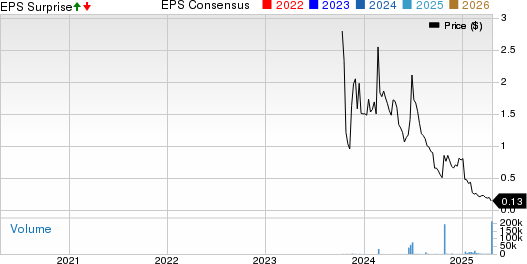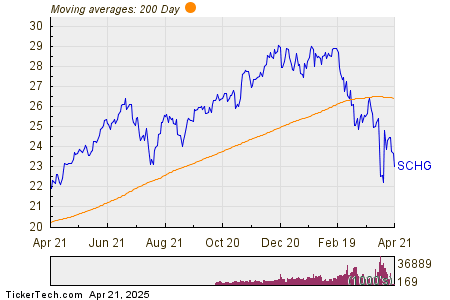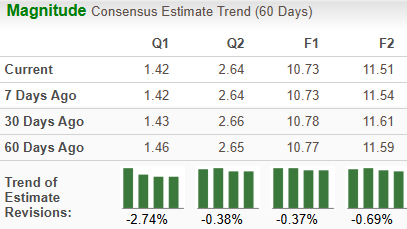Market Indices Decline Raises Concerns About Future Crashes
Earlier this month, the Nasdaq Composite Index (NASDAQINDEX: ^IXIC), the S&P 500 (SNPINDEX: ^GSPC), and the Dow Jones Industrial Average (DJINDICES: ^DJI) experienced one of their steepest one-day declines in years. This drop led all three major indices to enter correction territory, with the Nasdaq briefly slipping into a bear market.
While the indices have shown some recovery, many investors are questioning whether this is a genuine rebound or simply a temporary pause. Could the stock market crash again in 2025? Let’s examine what historical data suggests.
Where to invest $1,000 right now? Our analyst team has revealed the 10 best stocks to consider at this moment. Continue »

Image source: Getty Images.
Defining a Stock Market Crash
Defining a stock market crash isn’t straightforward. For instance, the S&P 500 fell into a bear market in 2022, dropping 25% from its peak, but many observers did not label this decline as a crash because it unfolded over several months.
Generally, a stock market crash refers to a rapid decline over a short span. While there’s no one-size-fits-all threshold for what constitutes a crash, most agree it involves a sell-off of at least 10% within a few days. For this discussion, we’ll define a stock market crash as a double-digit decline occurring over five days or less. The declines of the Nasdaq, S&P 500, and Dow following President Trump’s announcement of tariffs on April 2 fit this mold.
Historical Context
The most notorious stock market crash occurred in 1929, when the Dow dropped 13% on Oct. 29, a day known as “Black Monday.” The following day saw an additional 12% decline, and by mid-November, the Dow had lost nearly half its value. However, a rebound occurred in late November, continuing through April 1930, before stocks plummeted again, eventually losing as much as 79% by May 1932.
Another “Black Monday” struck on Oct. 19, 1987, marked by a near 22% plummet in the Dow, representing the largest single-day drop in its history. Although this crash was severe, it took nearly two years for the Dow to recover fully.

^DJI data by YCharts
The recent crash linked to the COVID-19 pandemic occurred in early 2020. During this period, the S&P 500 fell 12% from Feb. 19 to Feb. 27. After a brief recovery, the index dropped again by over 10% between March 4 and March 9, continuing to decline until reaching a low on March 23. However, stocks rebounded strongly by the end of that year.

^SPX data by YCharts
Numerous stock market crashes have occurred over the decades. Some are immediately followed by another crash within weeks or months, while others see prolonged recovery times, often taking several months or even years.
Future Predictions
Will the stock market crash again in 2025? The historical record does not provide a definitive answer. Notably, the factors contributing to past market crashes differ from those presently at play.
A permanent halt to the Trump administration’s tariffs could eliminate the risk of a stock market crash in the near term and potentially catalyze a market rally. While this is a possibility, it hinges on current political developments. The White House has already postponed some tariffs, and several lawsuits have been filed that could challenge the tariffs’ constitutionality.
Conversely, prolonged uncertainty could increase the chances of another sharp market decline. Whether such a drop occurs and whether it qualifies as a crash is uncertain and remains to be seen.
For investors, a long-term perspective remains the best strategy. Historically, stocks have recovered after each prior crash, suggesting that the patterns of history are likely to repeat.
Is Now a Good Time to Invest in the Dow Jones Industrial Average?
Before investing in stocks within the Dow Jones Industrial Average, consider this:
The Motley Fool Stock Advisor analyst team recently identified the 10 best stocks for investors at this moment, none of which are found in the Dow Jones Industrial Average. The stocks on the list have strong potential for significant returns.
Consider how Netflix was highlighted on December 17, 2004; if you invested $1,000 at that time, you’d have $524,747!Similarly, when Nvidia was recommended on April 15, 2005, a $1,000 investment would now be worth $622,041!
Notably, Stock Advisor has achieved a total average return of 792%, significantly surpassing the S&P 500, which stands at 153%. Don’t miss the latest top 10 list, available when you join Stock Advisor.
See the 10 stocks »
*Stock Advisor returns as of April 14, 2025
Keith Speights has no position in any of the stocks mentioned. The Motley Fool has no position in any of the stocks mentioned. The Motley Fool has a disclosure policy.
The views and opinions expressed herein are those of the author and do not necessarily reflect those of Nasdaq, Inc.




